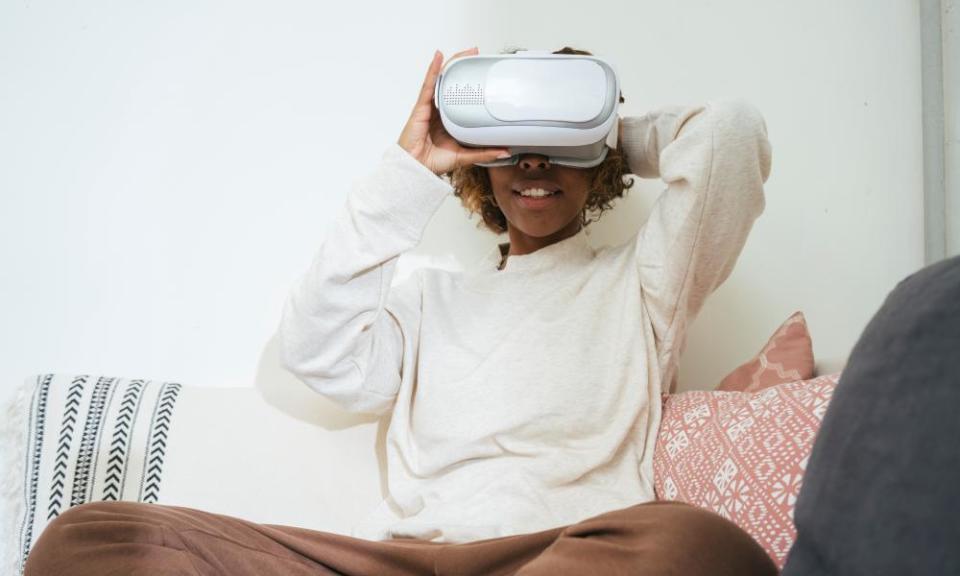‘This is all about personalised learning’: how tech is shaping the future of education

There’s no doubt that universities across the world are facing enormous challenges right now. Face-to-face learning is limited. Students and staff are having to move in and out of isolation, with all the disruption to learning that entails. Traditional exam assessments are proving tricky to hold in accordance with social distancing. But with the right tech in place, staff and students are discovering new ways of high-quality learning, collaborating and teaching that will enhance not just their university experience, but give them the skills they need for the workplace.
The digital learning revolution, which has been bubbling under for the past decade, is finally here. And that revolution will go way beyond just digitising lesson content, handing in an assignment online, or having an online timetable. “It’s now vital for students and teachers to have devices that can manage teaching resources, connecting and collaborating, because the next step will be around collaborative tools,” says Richard Henderson, director of global education solutions at technology company Lenovo, best known for its range of laptops and tablets. “How do you stay connected with your teacher? And how do you stay connected with your peers to create that vital formative learning, which comes from interaction and testing your ideas against your classmates?”
It’s been tough for universities to keep this vital interactive element of the student experience going during Covid-19 restrictions: jumping on a quick Zoom call isn’t a great long-term solution. And it’s become increasingly clear that in uncertain times, educational establishments need what Henderson calls “instructional continuity” – using the same tools and the same technology, no matter where the student is. That means a student who has to self-isolate without warning, for example, can connect from home without needing new tools.
“We’re working on this idea of a hybrid classroom,” says Henderson. “You can have tools in the classroom that allow students to connect – a camera, a microphone and a speaker. The teacher will have a screen where students join using Microsoft Teams or Zoom. They will see all the students that are connecting. Students can interact remotely with their peers on this collaboration platform and it’s all connected through this technology. This is very much the next stage, but it’s all happening a lot quicker than we thought it would.”
Tutors are also looking for better ways to understand their students’ strengths and skills to help them do better, and Lenovo is developing AI tools to help them with this. These don’t replace the assessments a teacher will be making during a class – rather, they enhance it, Henderson explains. “This is all about personalised learning – teaching to a student’s individual learning path and progress. That can happen more efficiently when you have the right tools. It can be difficult to work out which students are progressing more quickly when you have 100 students!”
A university that’s using tech effectively can also enhance students’ prospects in the workplace – in all kinds of ways. Today’s employer is likely to demand familiarity with platforms such as Microsoft Teams as standard, for example. They’ll also be looking for graduates who are used to collaborating, working and sharing remotely, and managing their home-learning time efficiently. But it’s not just these standard tools that can help, says Henderson. Lenovo’s tech is also enabling university e-sports players – online gamers – to connect in from home and manage their teams.
“We’re finding that students who are involved in e-sports are moving towards more advanced Stem fields,” he says. “We’ve been working on software that allows remote game management for universities for players who can’t come in. They can have a virtual team and a dashboard that shows how all the students are doing and allows them to coordinate online tournaments. And that’s really encouraging skills around leadership, teamwork and communication. Workforce readiness and preparation is yet another role tech can plan.”
And universities are also now starting to explore how immersive technology such as VR (virtual reality) and AR (augmented reality) can enhance the student experience and make for deeper learning. “We have seen research that students who are learning things in an immersive experience such as AR or VR are actually retaining much higher knowledge transfer than a student who would be learning from a textbook,” says Henderson. “They are performing 30% to 40% better. Plus, both AR and VR are now commonly used across all sectors for training, from the military to customer service. So while it’s not necessary for a student to know how to programme in VR, it’s great when they have an awareness of how these things can be used to help all areas become more efficient.”
Intelligent digital transformation, says Henderson, is taking place across the board, and today’s students will be driving its next wave. “Technology is becoming such an important part of the education experience. The next stage has arrived a lot sooner than we thought – and while it’s challenging, it’s also incredibly exciting.”

 Yahoo Finance
Yahoo Finance 